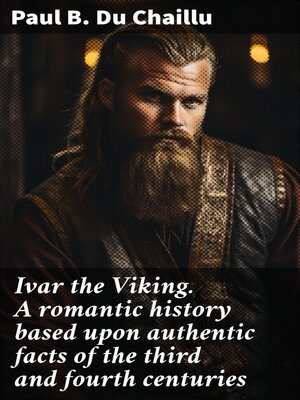Ivar the Viking. a romantic history based upon authentic facts of the third and fourth centuries
ebook
By Paul B. Du Chaillu

Sign up to save your library
With an OverDrive account, you can save your favorite libraries for at-a-glance information about availability. Find out more about OverDrive accounts.
Find this title in Libby, the library reading app by OverDrive.



Search for a digital library with this title
Title found at these libraries:
| Library Name | Distance |
|---|---|
| Loading... |
Paul B. Du Chaillu's 'Ivar the Viking: A romantic history based upon authentic facts of the third and fourth centuries' is a captivating novel that blends historical accuracy with a romantic narrative. The book delves into the adventures of Ivar, a Viking warrior, during the turbulent third and fourth centuries. Du Chaillu's writing style is engaging and vivid, transporting the reader to a world of battles, voyages, and love stories, all set against the backdrop of Viking culture and traditions. The portrayal of real historical events adds depth and authenticity to the fictional story, making it both entertaining and educational. Paul B. Du Chaillu, a renowned explorer and anthropologist, drew inspiration from his travels and research to create 'Ivar the Viking.' His keen interest in Norse history and culture is evident in the meticulous detail and accurate representation of Viking life in the novel. Du Chaillu's expertise in the field adds credibility to the story, enriching the reader's experience and understanding of the Viking era. I highly recommend 'Ivar the Viking' to readers who enjoy historical fiction and are fascinated by the Viking age. Du Chaillu's masterful storytelling and deep knowledge of the subject make this book a must-read for anyone interested in exploring the world of the Norsemen.







